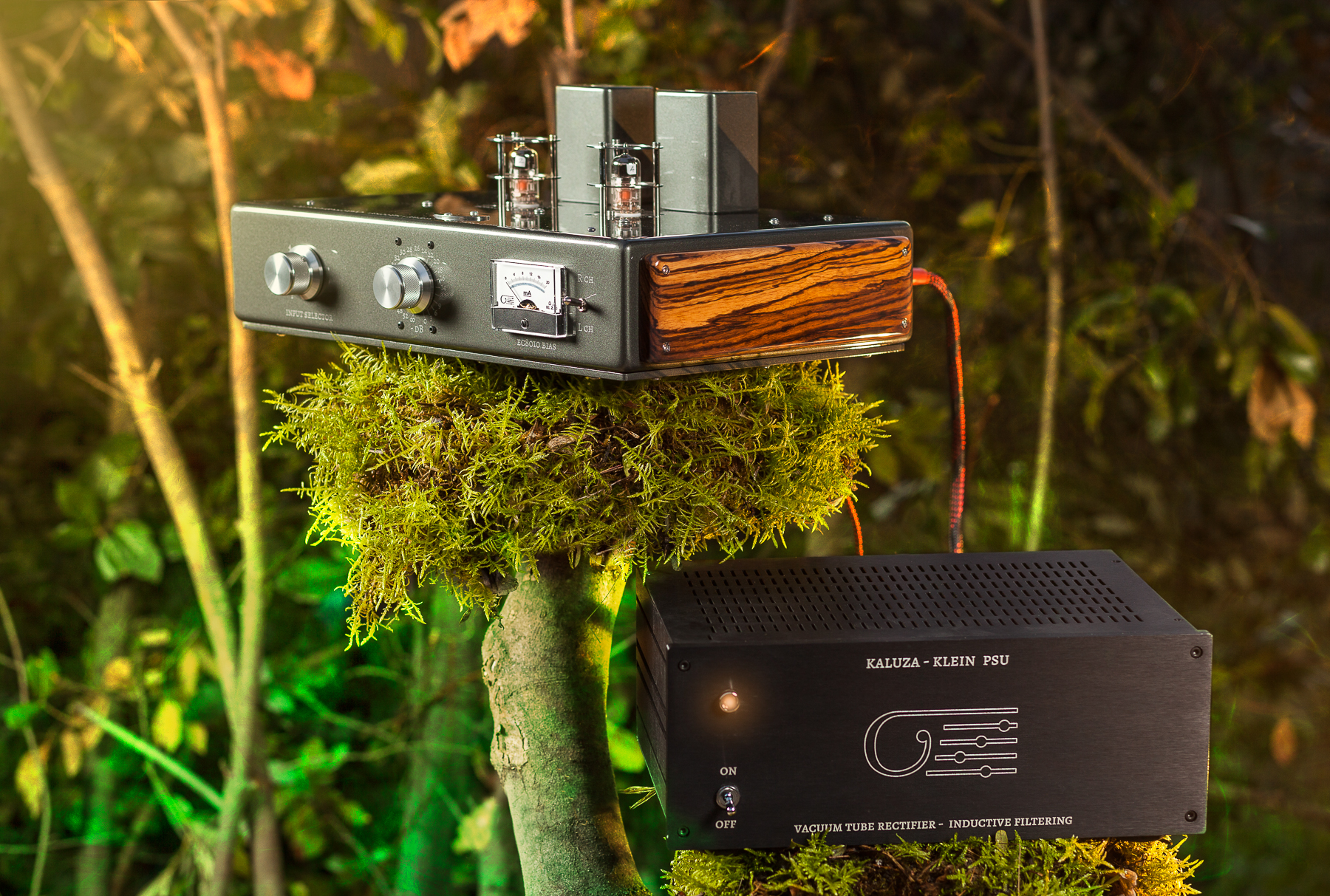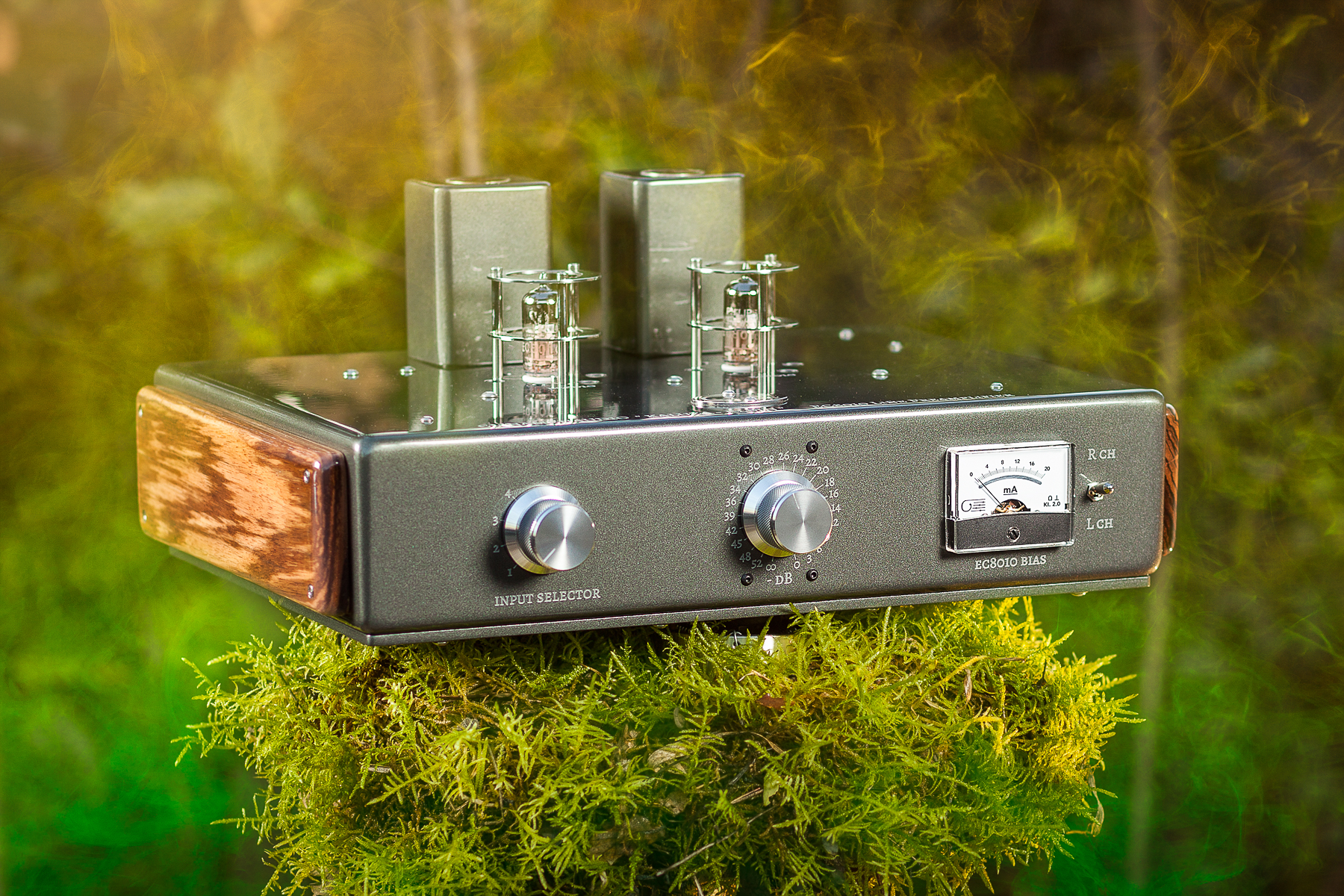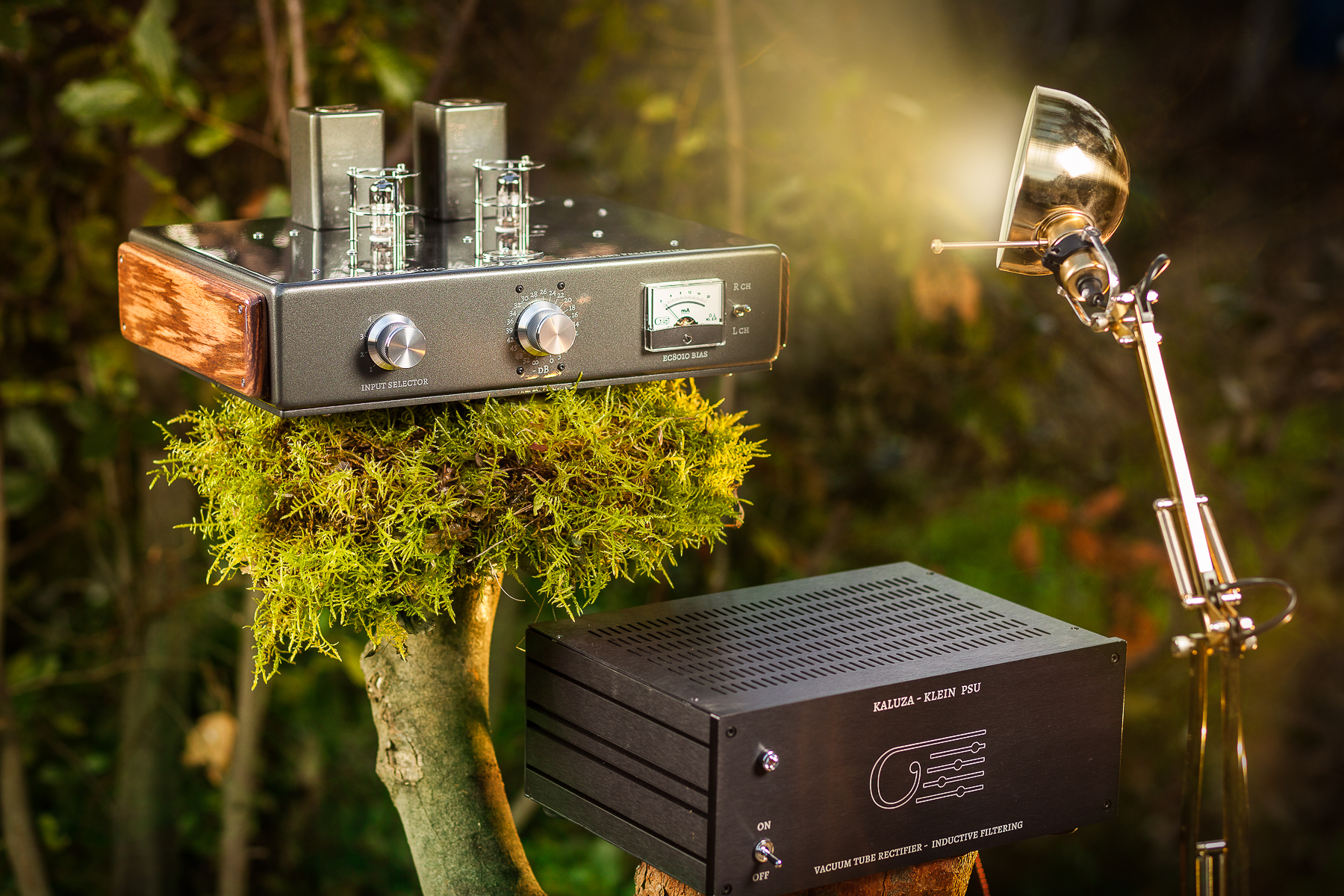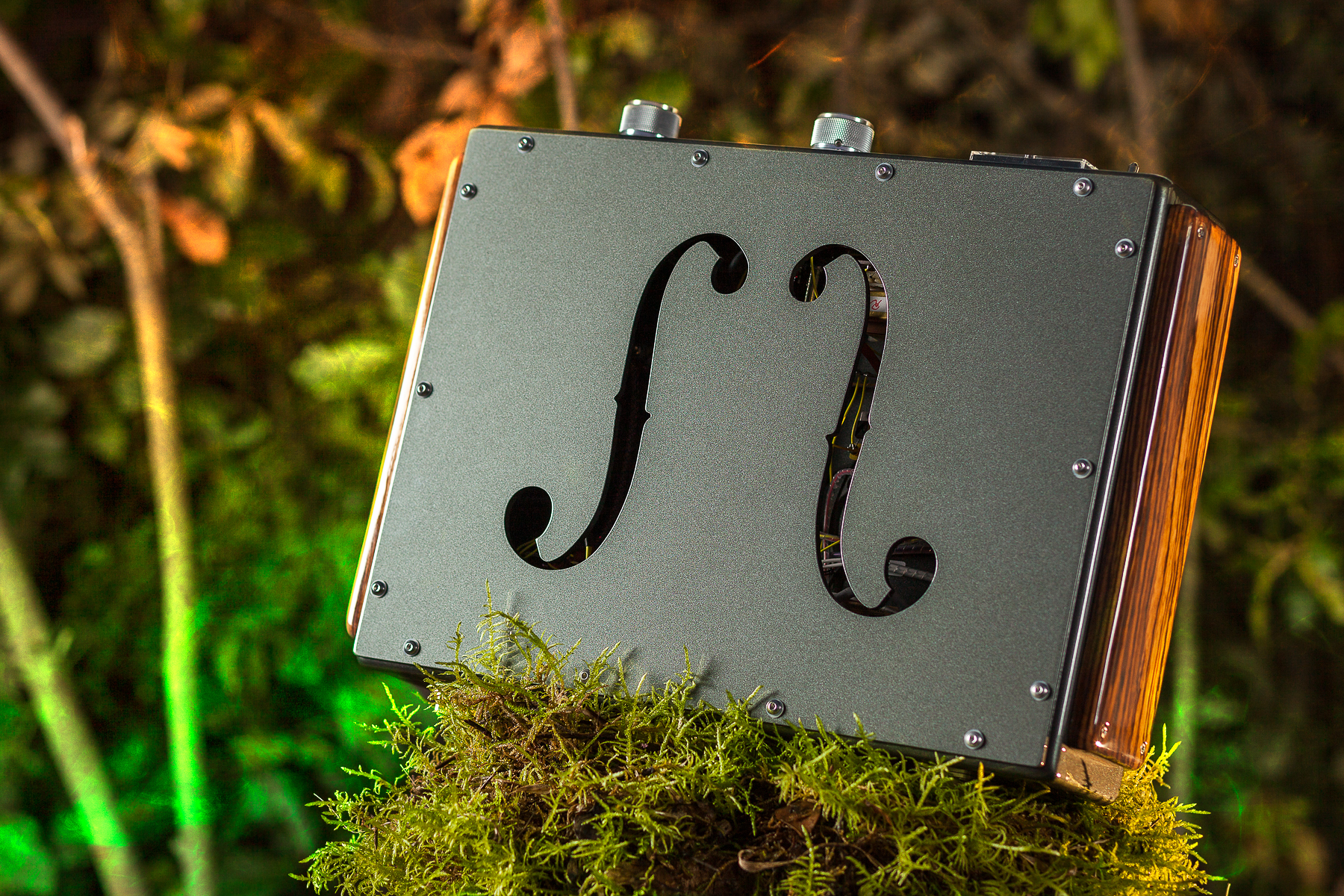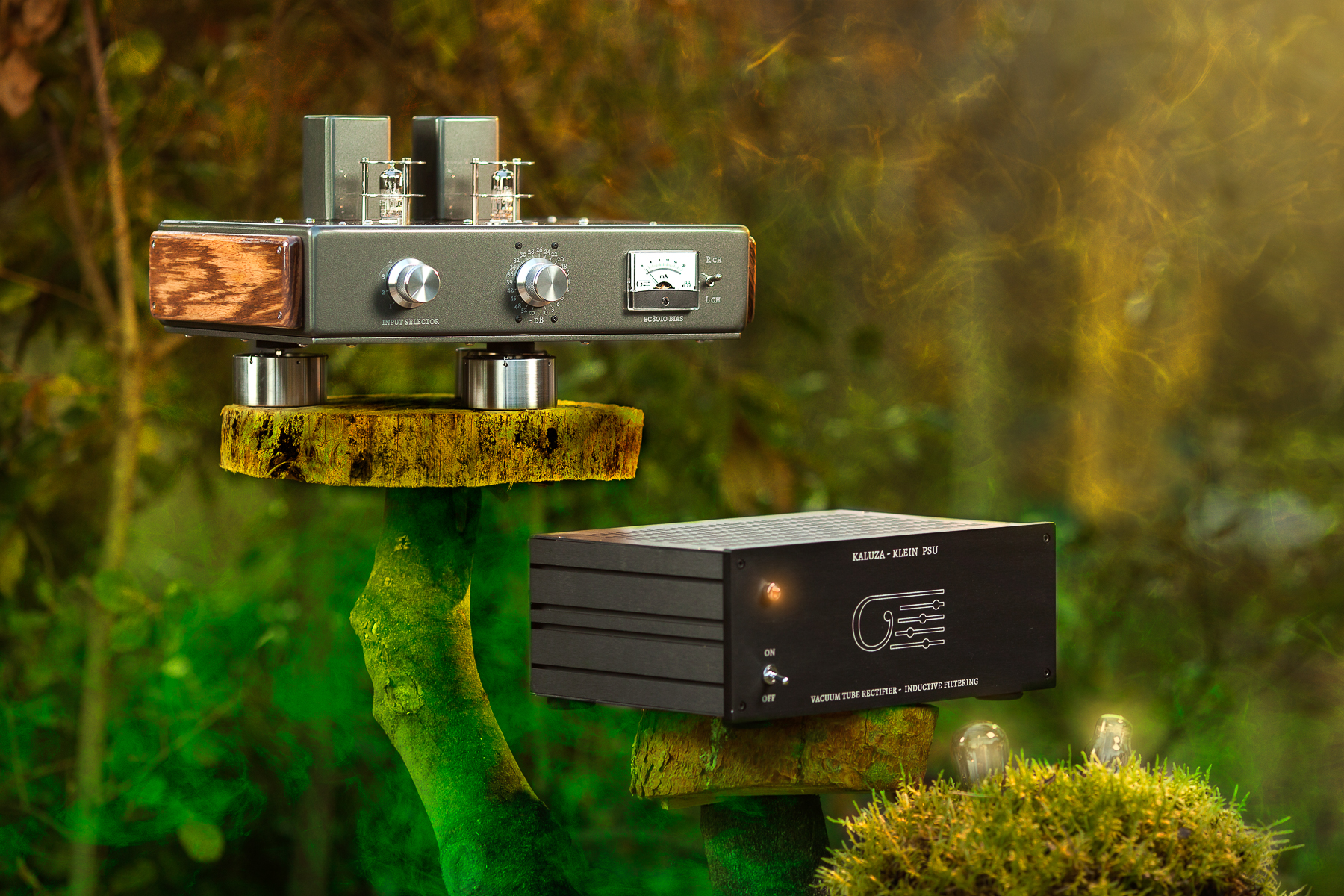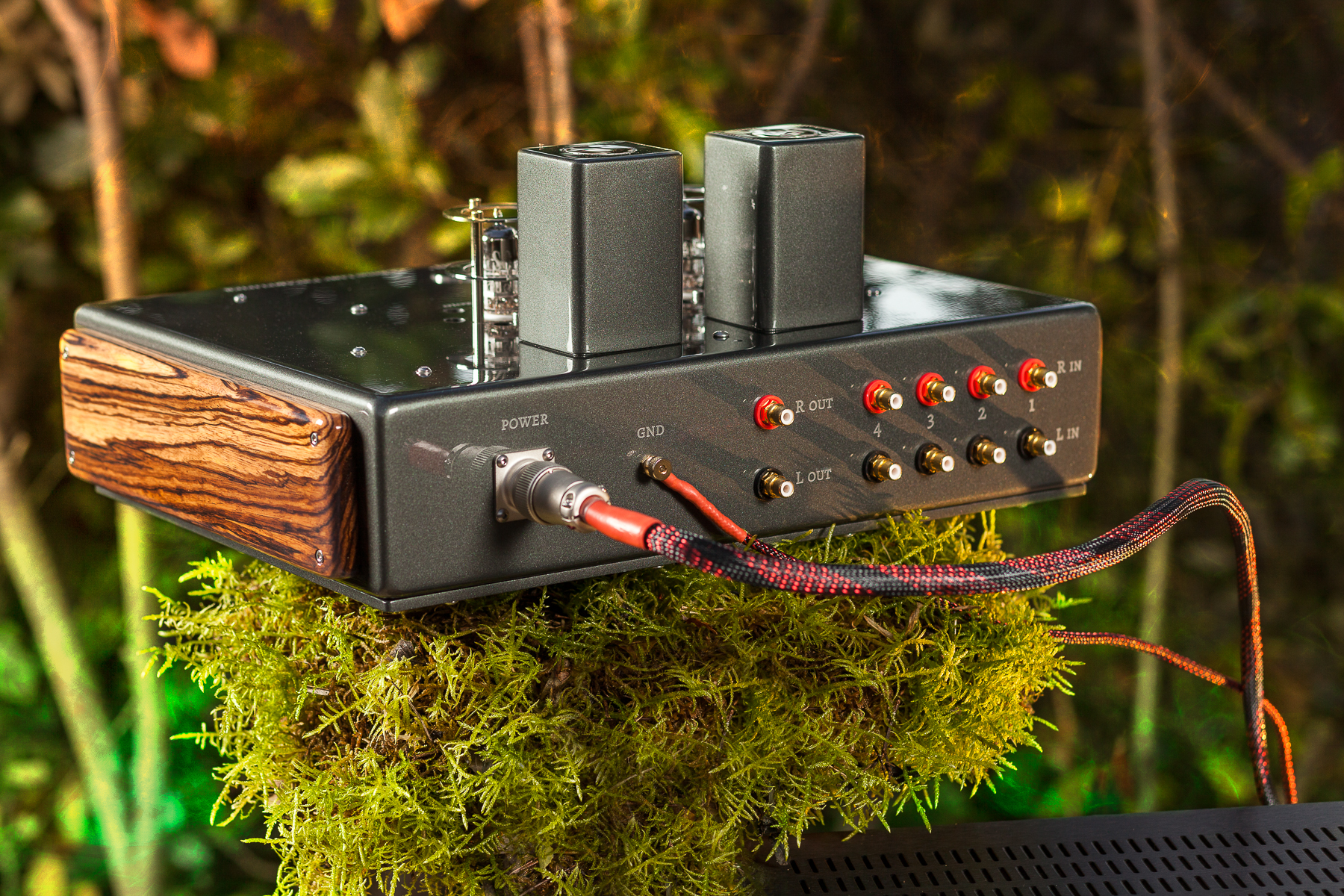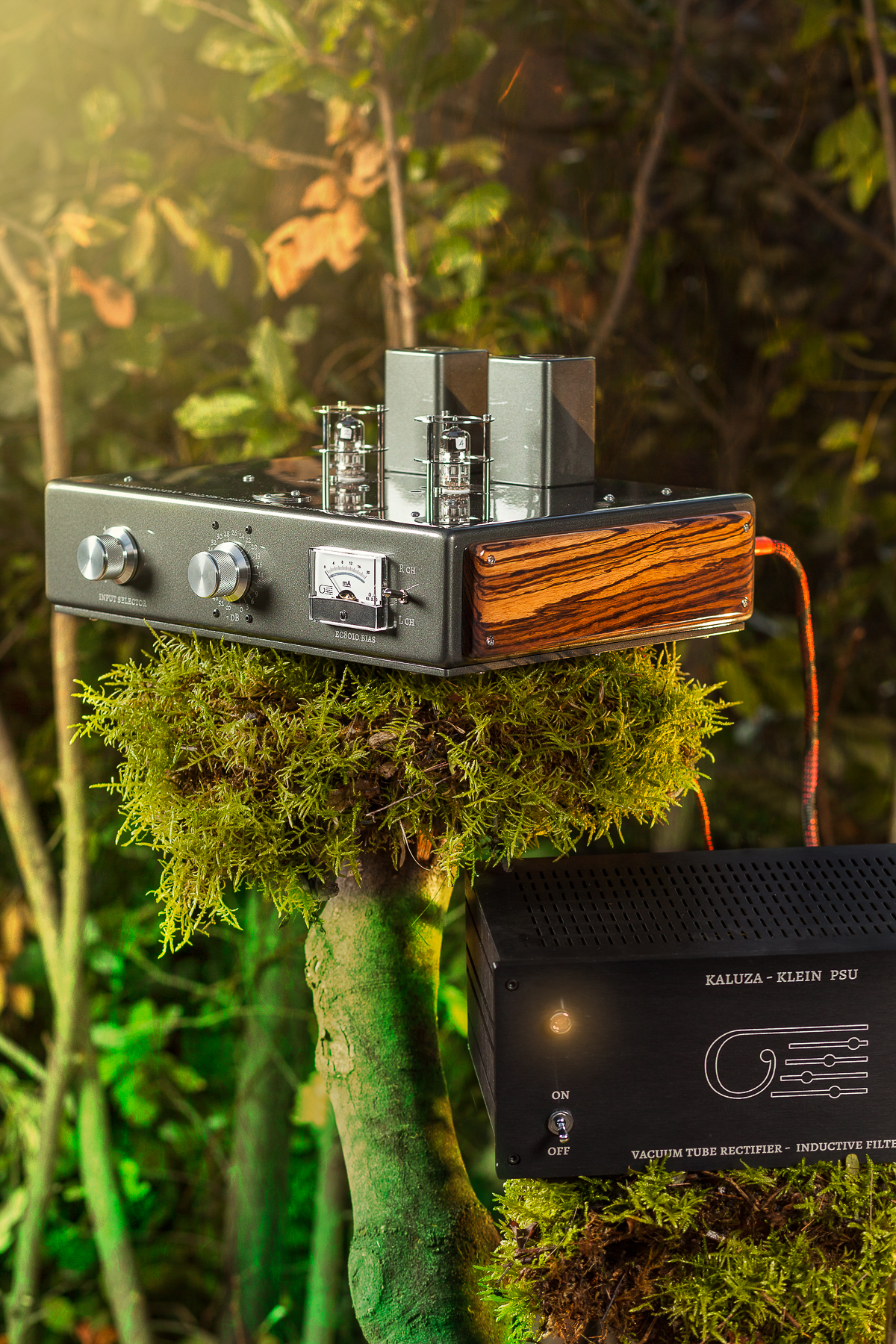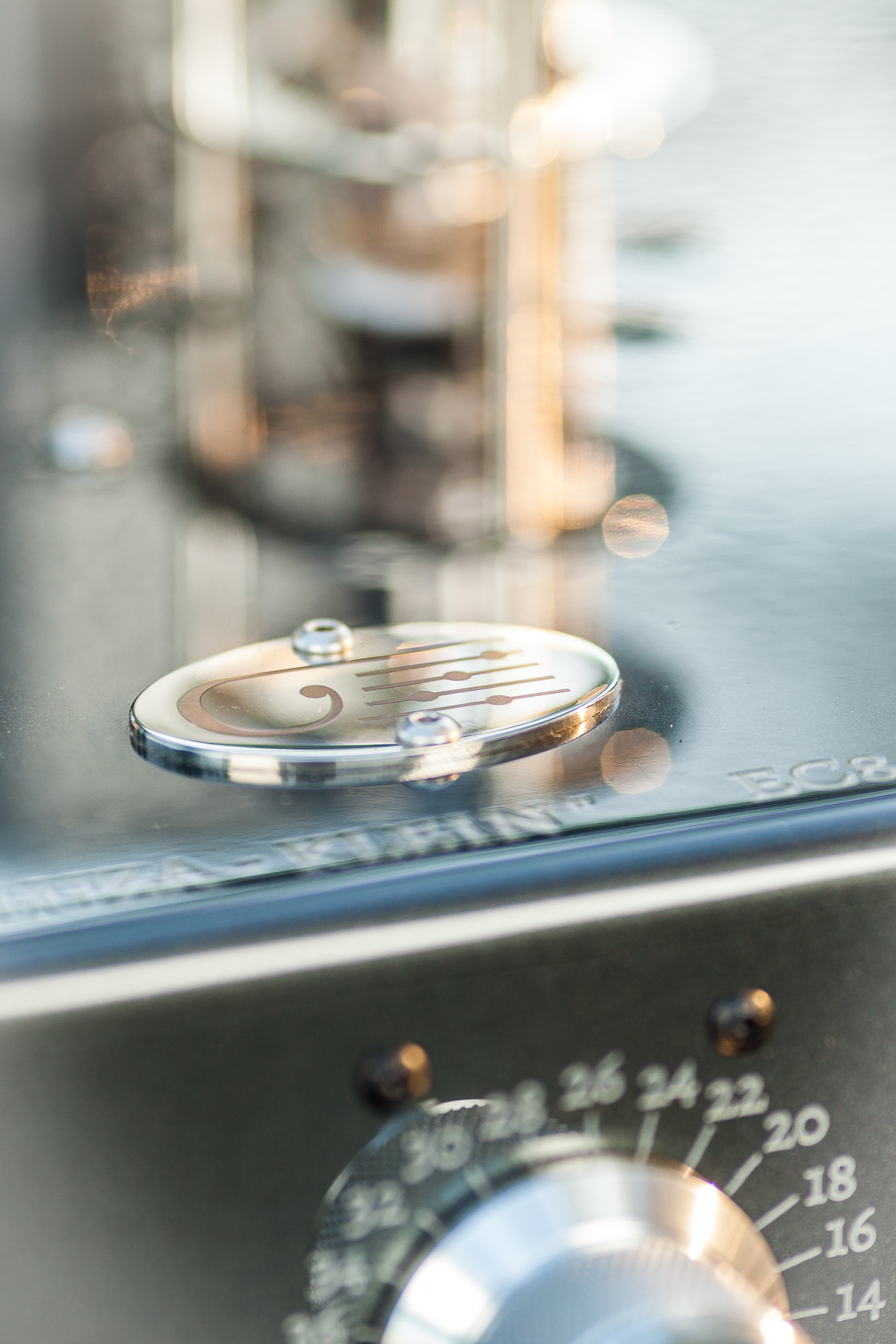Home |
Clinamen | Philosophy | Customer reviews | White paper | Pricing policy | Contact


"Kaluza Klein " 2 chassis Line preamp
The apparently bizarre name of this pre-amplifier is in homage to the two mathematicians/physicists Theodor Kaluza and Oskar Klein. They developed a theory which, under particular environmental conditions, allows unifying the equations of the gravitational field (described by general relativity) with Maxwell’s theories on the electromagnetic field. The condition mentioned above is the existence of a fourth dimension. It would have never been observed due to its extremely small dimensions, in the range of a Planck’s length, and therefore curled on itself (compactified space). The theory fell into obscurity but it has come back with the string theory.
The pre-amplifier Kaluza Klein (KK) is a line pre-amplifier engineered to give top of the range performance, designed with simple and elegant, not ordinary ideas, and with the best materials available in the world.
It has one active stage built around the EC8010 valve, a high trans-conductance triode, which combines high gain and low internal resistance. The valve interfaces with the output through a step down HASHIMOTO transformer, which sets the output gain and impedance values to ideal levels for a pre-amplifier, 12 mA and 320 Ohms respectively. These gratifying values are obtained completely naturally, without any tricks (no retroaction, no cathode follower).
The whole project is free from feedback, either local or total. Therefore its performance does not employ it, already having used high quality intrinsically linear material (a healthy patient doesn’t need medication).
The volume control is inductive, with Nickel (49%) nucleus transformers and 23 attenuation positions.
The power supply sits in a purpose built frame to minimize vibrations and flows dispersed by the impressive power supply transformer which is designed, however, with low flow and current density. In the power supply frame we find the vacuum rectifier EZ81 as well as the filtering condensers of anodic tension, obviously made of polypropylene.
Clinamenaudio hasn’t used electrolytics in the anodic power supplies of its reference devices for a very long time. The filtering is assisted by a Lundhal inductor which has the peculiarity of having two coils inserted in the positive and negative arms of the power supply, also in order to cut the disturbances in CMC mode. Finally we have the only printed circuit which is for the stabilization of the tension of the filaments of the E8010
Going back to the audio frame we have two further de-coupling condensers in polypropylene which supply an energy reservoir to provide abundant current, and most of all speed, to the refined EC8010. These triodes have a frame grid for zero microphony and an unusually big cathode that allows the emanation of considerable currents, both continuous and impulsive.
The valves interface to the circuit through JACKBAND bases (handcrafted in Italy) made from Teflon and tellurium copper. All the wiring is point to point, soldering with JANTZEN 4% Ag tin.
The ground mass system is highly refined with two partial independent star connections for the two channels and a center star connection to which the other mass loops refer to. This together with the frame separation ensures a very low level of residual noise, under 0.1 mV. Another astonishing datum is the maximum tension this preamplifier can emanate, an enormous 30 Volt rms. Even if such a high output level is pointless, this allows us to understand the technical and performance level of this pre-amp. It will be able to manage real usage situations easily and with low distortion, just imagine that. (A car that can reach 350 Km/h will have an easy ride at 100 Km/h).
On the front panel there is an Ammeter (in actual fact it is not a real Ammeter but for the purpose of its use it will be. It is a high internal impedance device that has the advantage of deriving to the anodic current, therefore not crossed by it) to monitor the resting current. Through a switch, the device reads the current on the two channels.
There are four inputs and the RCA connectors are SHARK SCY-700.
The audio frame is made from 3mm thick aluminum alloy, the bottom is 5mm thick and it carries elegant F-holes, which as well as being decorative, allow ventilation. The frame is professionally varnished in shiny metallic gray and the serigraphs are laser printed.
The wooden side walls are made from elegant zebrawood, mirror polished. The feet supplied are our spring uncoupling ones.
In the following link you can download the brochure of the KK preamplifier:
A review follows from Lawton Deane, California, that in 2020 buy a kaluza Klein preamplifier:

